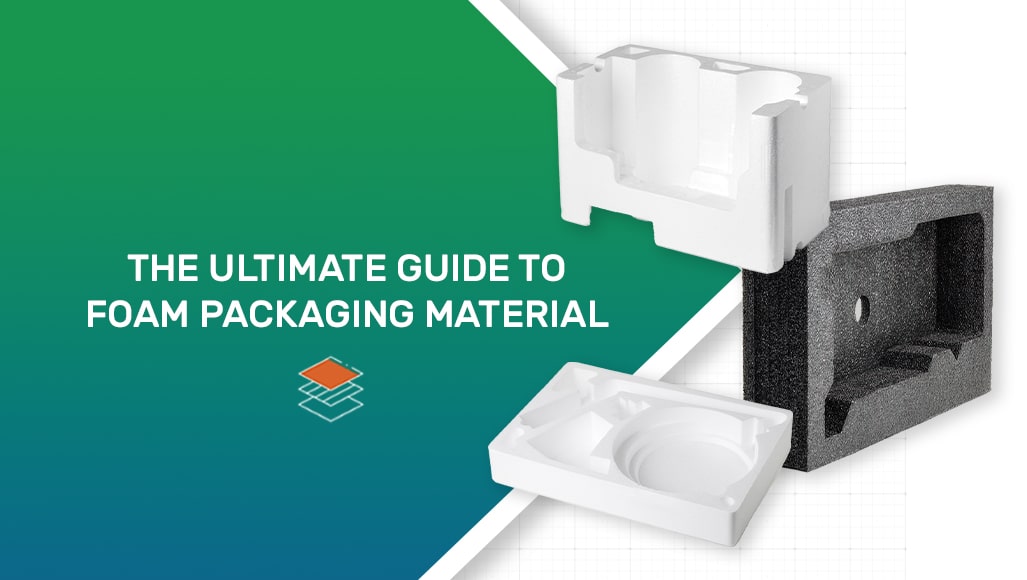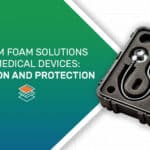Blog

The Ultimate Guide to Foam Packaging Material
When it comes to protecting valuable products during transit, foam packaging material has become the go-to solution. With its versatility, durability, and customizable nature, foam packaging offers unmatched protection from impact, vibration, and even temperature fluctuations. This guide will walk you through everything you need to know about foam packaging materials, from their different types to their business benefits.
Why Choose Foam Packaging Material?
Foam packaging material is lightweight, yet sturdy in nature. It helps safeguard fragile items, electronics, medical equipment, and other sensitive goods from potential damage. Additionally, foam materials can be custom-cut to fit any shape, adding an extra layer of protection where it’s needed most.
Foam packaging offers:
- Impact resistance: Cushioning against drops and rough handling
- Lightweight design: Minimizes shipping costs
- Flexibility: Customizable for different product shapes and sizes
- Eco-friendly options: Recycled materials for sustainable packaging
Now that we’ve established why custom foam is worth considering, let’s dive into the various types of foam packaging materials.
Types of Foam Packaging Materials
- Characteristics: Polyethylene foam is one of the most widely used packaging materials due to its excellent shock absorption and vibration dampening properties. Although it’s most known for its use in pool noodles, it’s also chemically inert, making it safe for sensitive items like electronics and medical devices.
- Applications: Often used for protecting items such as appliances, automotive parts, and medical devices.
- Characteristics: Polyurethane foam is an open-cell foam material known for its flexibility and ability to conform to different shapes. It offers superior cushioning for delicate items and is commonly used for items requiring more intricate protection.
- Applications: Typically used in custom cases, electronics packaging, and medical instrument storage. It’s also used in a variety of home furnishings, such as furniture, carpet underlay, and bedding.
- Characteristics: Cross-linked polyethylene foam, or XLPE foam, stands out for its superior strength, moisture resistance, and fine cell structure. This makes it an excellent choice for items that require precision and protection from harsh environmental factors.
- Applications: Ideal for packaging electronics, surgical tools, and items that need to withstand moisture exposure or temperature changes.
- Characteristics: EPS foam is a lightweight, rigid foam material with high compressive strength. Its insulating properties make it suitable for temperature-sensitive products, while its shock-absorbing abilities help protect fragile items during transport.
- Applications: Widely used for packing food, beverages, dry ice, pharmaceuticals, and products needing insulation, such as coolers and refrigeration systems.
- Characteristics: Anti-static foam is engineered to prevent static electricity from damaging sensitive electronic components. The foam is infused with an anti-static agent that disperses any static charges, ensuring your electronics remain safe during shipping or storage.
- Applications: Perfect for packaging delicate electronics such as computer components, circuit boards, and mobile devices.
- Characteristics: EPP and EPE foam is highly durable, offering excellent impact resistance and insulation properties. Their lightweight design is suitable for products that require robust protection while minimizing shipping weight.
- Applications: Ideal for automotive parts, appliances, and protective packaging solutions in high-stress environments.
- Characteristics: Reticulated polyurethane foam is a specialized open-cell foam with a porous structure, offering exceptional airflow and filtration capabilities. It is highly versatile, durable, and resistant to wear and tear, making it an excellent choice for applications that require breathability or filtering of liquid and gas.
- Applications: Commonly used in air and water filters, medical devices, and acoustic applications. Its lightweight, permeable structure also makes it ideal for packaging sensitive items that require both cushioning and ventilation, such as medical instruments, electronics, and appliances.
Choosing the Right Foam Packaging Material
Selecting the correct foam packaging material depends on your product’s needs. Here are a few considerations:
- Product Fragility: For extremely delicate items, materials like polyurethane foam would likely be best due to their superior cushioning properties.
- Environmental Factors: If your products are exposed to moisture, cross-linked polyethylene foam or expanded polystyrene may be best suited due to their resistance to water absorption.
- Static Sensitivity: For electronics, anti-static foam is the clear winner for protecting against static damage.
Customizing the foam to meet your product’s specifications is crucial to maximize protection. Foam can be die-cut and laminated into shapes and sizes that perfectly fit your products, providing secure packaging for even the most delicate or oddly-shaped items.
Conclusion
Foam packaging material is an essential asset for businesses looking to protect their products. With numerous foam types available, choosing the right material ensures your goods arrive well-protected, reducing the risk for damage and returns.
We offer a wide range of foam packaging materials to meet the diverse needs of our clients. Whether you need lightweight cushioning, moisture protection, or static resistance, our team of experts can help you find the right solution. Contact us today to learn more about how foam packaging can benefit your business.





